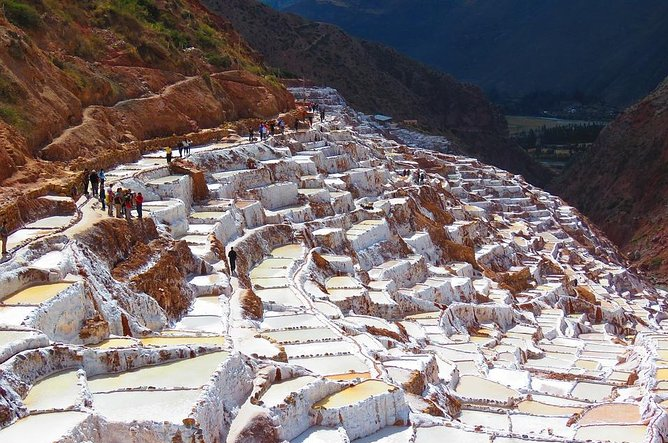
maras salt mines

The Maras Salt Mines, or Salineras de Maras, are a fascinating network of over 3,000 salt evaporation ponds located on the slopes of the Sacred Valley, near the town of Maras in Peru. These ancient salt pans have been in use since pre-Inca times and are still operated by local families using traditional methods. The salt is harvested by channeling a natural underground spring rich in salt through narrow terraces. As the water evaporates under the sun, thick layers of salt crystals form and are manually collected. The contrasting white salt against the surrounding red-brown hills creates a stunning and surreal landscape.
Each pond is individually owned and managed, and the salt is sold locally and internationally, including the prized pink salt of Maras. The site not only provides insight into ancient Andean agricultural practices but also offers a unique cultural experience. Surrounded by the beauty of the Andes, the salt mines continue to serve as a vital economic and cultural resource for the region. The intricate layout of the pools and the centuries-old techniques used to harvest the salt make Maras a remarkable testament to sustainable, communal land use that has endured through generations.
Logistics:
Trekking to the Maras Salt Mines is a scenic and moderately easy hike that offers beautiful views of the Sacred Valley and the Andes Mountains. The most common route starts from the town of Chinchero or the Moray archaeological site, and the trail typically passes through rural landscapes, farmlands, and small Andean villages before reaching the salt mines. The hike from Moray to Maras and then down to the salt mines takes about 3 to 4 hours, depending on your pace. While the trail is not particularly steep, the high altitude (around 3,000 meters or 9,800 feet) can make the trek more physically demanding, so acclimatization is recommended.


